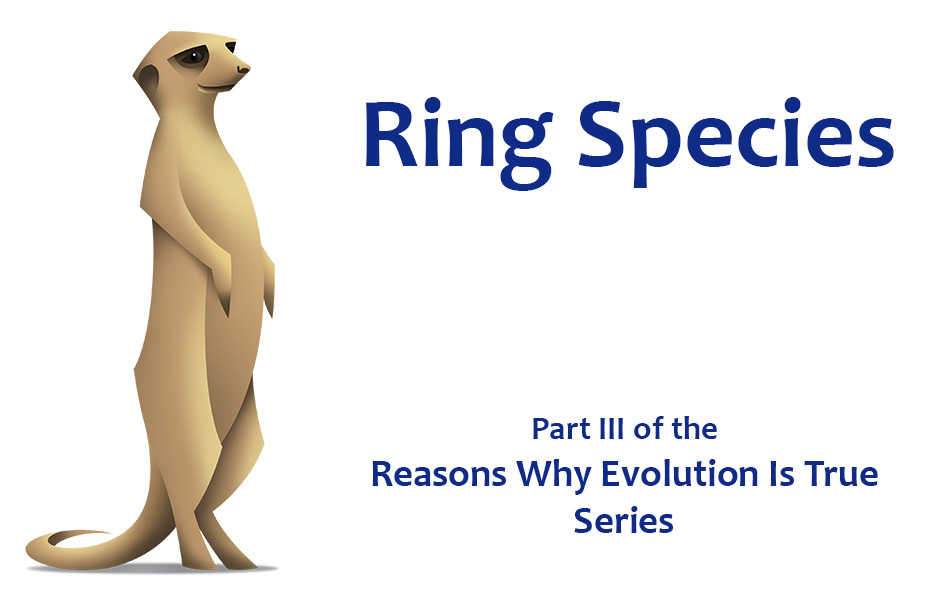One common argument proposed against evolution is that we cannot see speciation in action, and thus cannot know for certain that it happens. To say that this claim is false is an understatement. Artificial selection, both in terms of the range of domestic species produced by humans over the last 10,000 years, and artificially selected laboratory populations of bacteria, insects and small mammals, certainly go a long way to prove that natural selection and speciation are possible. But does it occur in nature?
Natural selection operates over thousands of generations to produce gradual changes which may eventually lead to speciation. Speciation is the process which creates new species; populations of individuals which cannot interbreed with each other to produce fertile offspring. Because of the huge timescales involved, it is seemingly impossible to observe it occurring in wild populations. However, nature has produced one phenomenon which solves this problem: ring species. A ring species is a series of populations of a species which are connected by relatively small numbers of interbreeding individuals. Interbeeding is possible between neighbours in the ring, however each population in the series differs very slightly from the next, resulting in the populations at the ends of the chain being so different from each other that interbreeding is no longer possible. Thus the populations at the ends of the ring can be considered separate species, but they are connected to each other distantly by members of intermediate populations breeding with each other.
There are several examples of ring species in nature, and in total 23 cases have been proposed. Two of the clearest examples come from Ensatina salamanders and Greenish Warblers.
Salamanders
Ensatina salamanders are found on the pacific coast of North America, and are all descended from a single ancestral population. Populations of ensatina salamanders form a ring around the San Joaquin Valley in California. In Oregon and Northern California, a single species exists, and moving southwards neighbouring species are able to interbreed with each other until the ring closes in Southern California, where two separate species are present.
Warblers
A similar situation exists in Greenish Warblers (Phylloscopus trochiliodes) found across central Asia and eastern Europe. Deserts in central Asia, such as the Tibetan Plateau and the Gobi Desert, are uninhabitable for the bird, which instead forms a ring of populations inhabiting the surrounding mountains. In Siberia, two distinct species of greenish warbler coexist, and do not interbreed with each other. However, these two species are connected by a ring of populations moving south out of Siberia and encircling the Tibetan Plateau.
Ring species provide an excellent example of evolution in action. Populations of a single species separated by a geographical barrier (uninhabitable land such as a desert or mountain range) will slowly and independently accumulate genetic differences which can, over time, lead to sufficiently large divergences to render the two populations different species. Ring species merely show this process in action, because the geographical isolation is not absolute, and the process of speciation happens geographically rather than temporally.
Articles in this Series:
- Intro: Reasons Why Evolution is True
- Part One: The Panda’s Thumb
- Part Two: Parasitoid Wasps
- Part Three: Ring Species
- Part Four: Galapagos Finches
- Part Five: The Quirky Human Eye
- Part Six: Homology
- Part Seven: Coevolution
- Part Eight: PreCambrian Rabbits
- Part Nine: DIY Evolution
- Part Ten: Convergent Evolution
Want to Know More?
- Ring Species on the Evolution Library
- Ring Species: Unusual Demonstrations of Speciation Darren Irwin on Action Bioscience
- Irwin, Irwin & Price (2001)Ring species as bridges between microevolution and speciation Genetica




